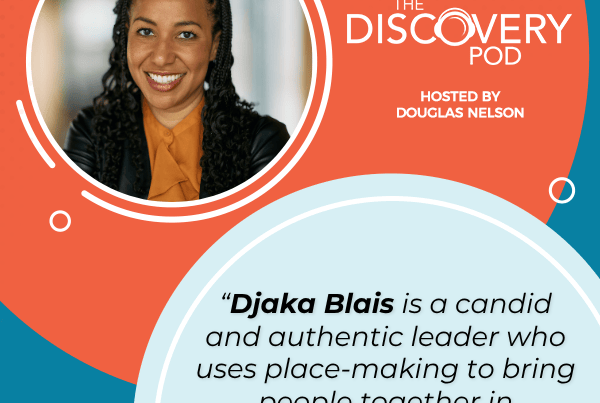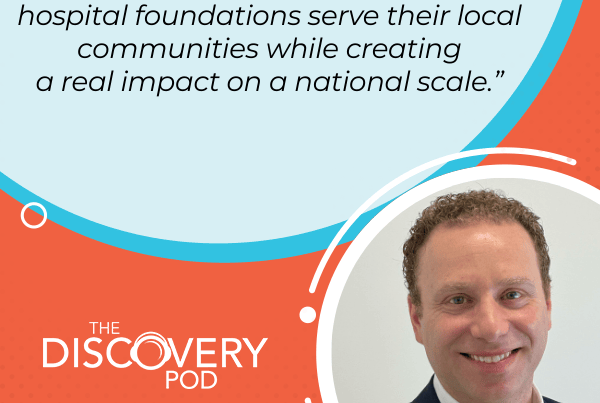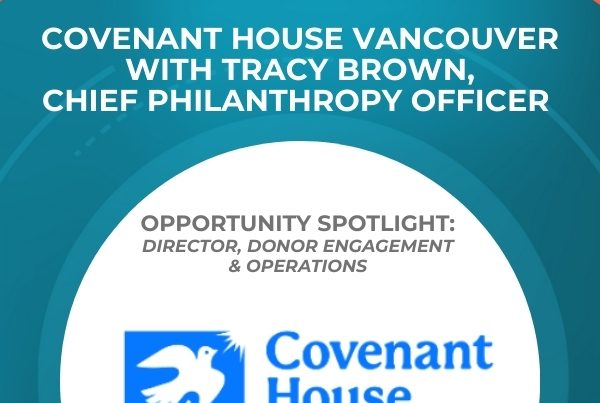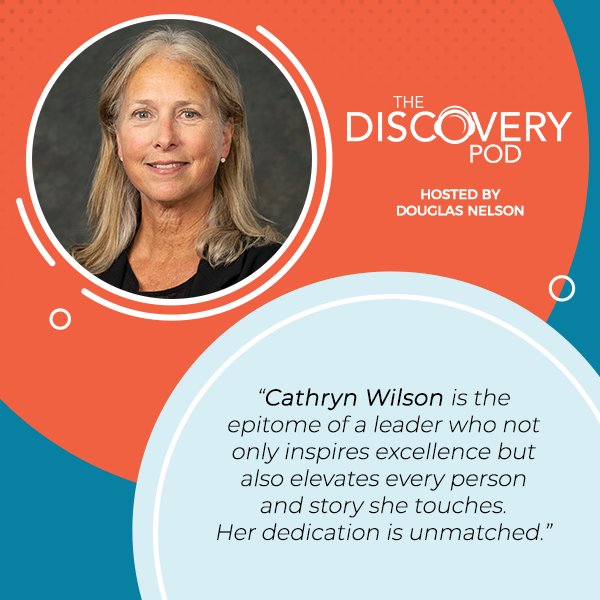
In this episode, Doug Nelson interviews Cathryn Wilson, Executive Director of the BC Achievement Foundation. Cathryn shares her insights into the foundation’s journey, the importance of storytelling, and how leadership plays a pivotal role in uplifting communities across British Columbia. From growing a team to fostering inclusion and recognition, this conversation delves into the strategies that have helped BC Achievement inspire excellence and drive impactful change. Tune in for a look behind the scenes of leadership in the nonprofit world.
—
Listen to the podcast here
BC Achievement Foundation With Cathryn Wilson, CEO
Introduction And Overview Of BC Achievement Foundation
In this episode, we have Cathryn Wilson. Cathryn is the executive director of the BC Achievement Foundation. We’re thrilled to have her on our show. Since 2015, Cathryn has served as the executive director with a mission to elevate excellence and inspire achievement. In our conversation, Cathryn talked a lot about how you maintain and engage the board, how you show up as a storyteller of other people’s stories in a respectful and meaningful way that highlights their excellence, and how you bring your own organization along in the process.
Cathryn talks a lot about the foundation’s journey from being a small contractor-led organization to now a vibrant team of four full-time employees delivering on their important mission. If you’re interested in what it looks like to grow a foundation and stay connected to the community you serve, you’re going to love this conversation with Cathryn Wilson.
—
Welcome to the show, Cathryn.
Thank you, Doug. It’s great to be here.
I’m looking forward to the conversation we’re going to have to be able to share with our audience. BC Achievement Foundation is a unique organization both in its purpose and its structure. There’s a lot that our audience can learn from how you and your colleagues do your work and serve your purpose. As we get started though, tell our audience a little bit about your organization, who it serves, and what its mission is.
Thanks, Doug. Thanks for your interest in BC Achievement. I’m excited to be able to tell our story. The foundation was started over two decades ago. We’re entering our 21st year. Our job is to serve the people of British Columbia and to tell their stories. We’re in the business of storytelling. We lift people up. We shine a light on the work that they’re doing and we do so with the intent to inspire others. It goes beyond telling the stories of excellence. It’s so that others can see themselves in these stories and follow the leads of these remarkable British Columbians.
We lift people up, shine a light on their work, and inspire others through their stories. It’s more than storytelling—it’s about creating impact. Share on XI like that idea of setting yourself up as being in the business of storytelling. Can you tell us more about what that looks like and how you decide which stories to tell?
We use recognition. We offer five different programs. There are award recognition programs, and we use recognition as a tool to tell these stories. We run a call for nominations for each of the five areas that we work in. We have independent juries that come in and evaluate the nominations. Every year, we celebrate those who are selected to represent excellence during that year of the deliberations. It’s an opportunity for us to work in different areas. We work in the art space. We run two programs in the art space. We work in the indigenous space, and we also do a community leadership program.
Recognition is a powerful tool. It validates hard work, gives people a platform, and inspires communities to see what’s possible. Share on XI’ve had the opportunity to attend some of your events and some of these recognition events over the years, and it is a remarkable coming together of people from across the province, sharing not only their own excellence but what they represent in the communities that they represent. What has been your experience as executive director in having the chance to meet these individuals in the communities that they serve?
It’s a privilege. Every member of our team is grateful for the opportunity to meet the awardees and tell their stories. We fall in love with them as soon as we receive the nominations, and then we go through the process of getting to know them. For some of our award programs, we produce films about them. By the time we get to meet them in person, we’re so excited and everybody always exceeds expectations. We feel like we’ve continued building on a family. We’re in a very fortunate position. When describing our jobs, it’s hard to explain exactly what we do, but someone said, “You spread joy for a living.” I think we do.
We’re all in the business of spreading joy—what better job could there be than uplifting people through their stories of excellence? Share on XWhat a great thing to put on a business card. It must be very difficult to adjudicate because when you want to tell these exceptional stories or these stories of individual and community excellence, one nominee sounds great and the other one probably sounds great. How do you decide?
Challenges Of Running A Foundation And Deciding Excellence
It’s very difficult. The foundation facilitates these jury processes. They’re extensive. We work with an independent jury every year for each of the programs. The programs are all three years long. A nomination can exist for three years in front of three different juries. We always make the jury do the hard work and it’s painful. It’s a remarkable process. We locked them up in a room for a day. Some of our juries have been since COVID switched to online and we’ve kept them online, but they’re still remarkable experiences of people listening to each other, respecting the wisdom around the table, and coming to a collective decision of what excellence looks like for this particular area that we’re lifting up.
I know that increasing visibility and inclusion has been a cornerstone of your organization’s ethos over the past many years. How do you go about fostering that inclusive space, and what are some of the initiatives that you’ve implemented?
It’s an evolutionary thing for us. We learn more and more every year, and we’re lucky enough to be small and nimble that we can change and try to streamline our practices. We were very fortunate in our one program called the Indigenous Business Award, which has been around since 2009. It’s Indigenous-led now, and it’s made a huge difference to how we’re able to ensure that we remove barriers and have access to everybody, even through our online nomination process.
During the lifetime of my tenure, back in 2015 when I started, people still used mail. We used to get nominations mailed to us. During that time, we’ve become an online nomination process. That’s not accessible to everybody in our province, even though those of us who work online every day might tend to forget that. We have to think about how we can support the communities that we aim to serve, how we can work with the nominators, and make our online processes available and accessible to all.
One of the issues that we see in our sector is too often many of us in many organizations are anchored in scarcity. There’s never enough time, there’s never enough money. The fact that’s true doesn’t mean that’s where we need to hang out. A lot of our work here at the Discovery Group is helping organizations to anchor first in abundance and build from the strength of their organization and their positioning rather than from their weakest link. I think there are some parallels between focusing and anchoring in abundance and this focus on celebrating and recognition. Why in your mind is recognition so important? What’s the impact you see through these recognition and award programs?
I see it as a tool to tell the stories of our time. We recognized over 1,100 awardees throughout the last two decades. We can shine a light on the work they’re doing and representation matters, and show people what can be done. We also give people a platform to tell their stories. For example, we had an awardee from a young entrepreneur, and she told us that winning the award changed her life because she had a reason to have a voice. She could speak to the youth in her community and say, “You should take a risk. You should access this loan program that she had access to build her business.”
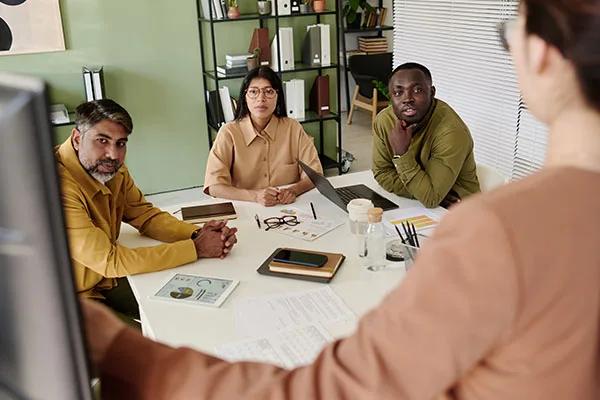
BC Achievement Leadership: Representation matters. It shows people what can be done.
The Impact Of Recognition On Awardees And Their Communities
They believed her and she had credibility because she’d been recognized with an Indigenous Business Award. We hear that over and over again and see how giving people this recognition validates the work that they’re doing and puts them in a different light. When they come together with other cohorts, they see that they’re working in a shared community of people trying to do the same work that they’re doing and drive change.
Is there a story from the last couple of years that stands out to you as an example of the storytelling BC Achievement seeks to tell?
It would be hard to choose one. One of the things we say at BC Achievement is when you receive our recognition, your journey with us is just beginning. It sounds tripe but it’s so true because that’s the beginning of how we get to know people when they receive our award. We work hard with the alumni of our programs to continue to tell their stories.
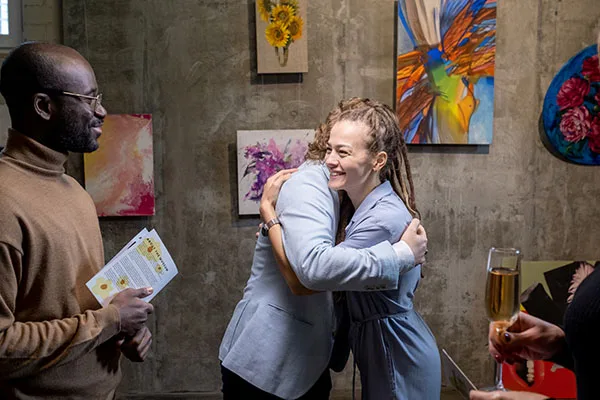
BC Achievement Leadership: When you receive our recognition, your journey with us is just beginning.
There were a quick little few. One of our programs is the Applied Art and Design Award. That’s functional art with a purpose. The Applied Art and Design program recognizes art with a function. All of the artists are innovative, but inspiring awardees. Back in 2019, they designed prosthetics and made them pieces of art so that people who needed prosthetics could have these beautifully designed prosthetic covers.
One of them was an industrial designer, and one was a fashion artist and they came together and developed these beautiful prosthetics that were used in the Olympics. I guess it was in Rio that they first presented it. We’ve been working with them as part of our alumni program, and they appeared in Vancouver Fashion Week. It was remarkable to see these individuals strutting the runway with these gorgeous prosthetics, all because of this young company run by two innovative Applied and Design artists. It’s changing the direction of the communities that they were aiming to serve.
That’s a great example of ingenuity and equity in action.
You saw them on the runway. It was breathtaking.
If people are interested in submitting a nomination, what does that look like? Walk us through the process.
Nominations And Supporting Community Access
It’s a good question especially right now. Because we’re always trying to think of ways to improve access, we’ve decided to keep our nominations open all year round for the first time, instead of having segmented calls for nomination for each of the programs. It’s to encourage people to nominate when they’re in the moment. When they are inspired by an individual who’s doing remarkable work, they can go and immediately nominate them as opposed to hearing about the award and having to think about it and time their nomination accordingly.
That’s been a big change that we’re excited about, and nominations for all five programs will close at the same time on February 15th, 2025 for the 2025 awards. It’s an online process. We communicate with the communities that we serve and share on social media. You can go online and nominate someone. The big thing is that all the staff are standing by and ready to help so you don’t have to feel like you’re doing this alone late at night trying to fill in a nomination form. We’re here to support you.
I encourage our audience to have a look at that and to think about anyone in their networks and in their lives who may be an appropriate nominee for these awards.
We are dependent upon the nominators. They are a big part of our storytelling activity. Without them, we don’t have the stories that we will work through with the jury and then share with British Columbians.
You have been Executive Director at BC Achievement Foundation for more than nine years now. I’m curious how you’ve seen the sector itself change in those years that you’ve been in that leadership role.
It’s been a time of huge change. Even this mentioning of Canada Post versus online. These ways that we communicate have dramatically changed how we need to reach our audiences. I’m sure other social prophets are facing the same questions. How do you communicate with people now? How do you draw them in? We don’t write letters, email is ignored, and social media is prolific. It’s very challenging to try to bring people together in so many different areas of the work that the stories that we lift up and the work that we’re all trying to do.
We had to pivot regularly, never mind the fact that COVID threw all of us into rather a different mindset where we weren’t allowed to gather, and gathering is such a big part of the work that we do. It’s been very challenging in that regard, but I do see a different opportunity for us to engage. It’s making sure that we keep up with the importance of being in person if somehow we can continue to encourage that at the end of each of our programs. I feel that we have a better time telling the story to share with a greater audience.
Your organization has done such a thoughtful way and has been so thoughtful about evolving the stories you tell and how you engage the broader community, how you make sure that your work reflects many communities that make up British Columbia. What advice do you have for other leaders and other organizations that perhaps looking at doing a more effective, more incrementally improving job of reflecting the communities they serve?
We see ourselves as a resource and we try to look at everything through the lens of our awardees. When we make a decision about an event and what an event looks like, the purpose of the event is to celebrate the awardees. Every decision we make comes back to that. Is this recognizing the awardee? Is this decision lifting up someone? That’s helped us. At the same time, we’re accessible to everybody in terms of the products that we produce. Our award celebrations are filmed. They’re online.
We make films about a number of our awardees. They’re online for anyone to use, whether for content for education or for storytelling purposes in their own work. We make ourselves available to everybody. That’s helped us serve communities. Also, we love to partner with people or at least share our work with like-minded organizations so that together we’re stronger and serving the same community side by side and not in any competitive fashion.
Cathryn, you have a reputation of being very much the epitome of a servant leader and how you approach your work. Your answer to that question is a great example of that. I’m wondering if you could go back and tell us a little bit more about the process of seeing your work through the lens of the awardees. I’m sure that sounds like doing that, there’s a switch you can switch or a button you can push. I would imagine that’s a challenging process of learning both for your organization and for individuals within your foundation. What has that journey been like?
It’s changed over the years in terms of our learning, for sure. I was lucky enough to be involved with the foundation before I became the executive director and I was involved with the launch of the Indigenous Business Award in 2009. That program was brought together by a number of First Nations and Indigenous leaders throughout the province. It’s interesting to be part of that process and sitting and listening to what would serve this community the best, and being the organization that delivered the program and didn’t necessarily make all the decisions around how to curate it, for lack of a better word.
The best piece of advice I received was when we were trying to figure out how to do something as simple as honor the awardees in a respectable fashion that was suitable for First Nations and Indigenous people. One of the elders on our committee said to me, “Make sure that the decisions you make are for the awardees who are walking in the room. Make sure that when you think about the room, when you think about who’s going to be in the room, where they’re going to sit, what they’re going to eat. That it’s about the awardees and not about the people sitting in the room.” It was like setting a dinner table when thinking about your guests and how you want them to be received in your home. That’s how we’ve treated everything that we do.
I want to ask a little bit more about your own background. Could you walk us through this quickly? This isn’t like the interview question of tell me about yourself. This is much more like the interest in you sharing your journey in the social profit sector and how you came to the role that you’re in today.
It’s been interesting and I’ve been lucky enough to work in the public as a public servant, I guess in one way, not in the traditional sense, but most of my career, whether I started off my career in politics, which was interesting in Ottawa and in Toronto and came out West and was lucky enough to work with the faculty of medicine and got to see what fundraising could change lives through the department of orthopedics of all places.
From there, I started working in other areas of fundraising and was lucky enough to work for the BC Cancer Foundation. A role that was near and dear to my heart and translated over to a lot of the work I do now, which is stewardship. I see a great alignment in the work that we do. We think of ourselves as stewards of the awardees. We steward their stories, and we steward their work. That background in both government and fundraising set me up to appreciate the work that BC Achievement tries to achieve.
As you’ve gone through that journey, are there any mistakes or moments of learning that stand out for you, that helped shape you as the leader you are today?
There are so many. In terms of BC Achievement, we’re still very small, but we started off as I was the sole proprietor of a contract that we had with the BC Achievement Foundation. We have morphed into a real foundation with four full-time employees and no more contract employees who deliver the programs per se. It’s been such an interesting journey as we’ve every year brought on a new employee and developed the foundation and its operations side.
During that, it was difficult to do the right thing in terms of understanding what a solid foundation that has sustainability is. That was what our big goal would look like. For me, it was respecting and appreciating what an employee brings to the job. A lot of our employees were contract employees ahead of bringing them on. Someone said to me, “Why do you want to do that? Economically, it’s better for your foundation if you hire contract employees to do this work.”
I thought, “But they don’t behave like contract employees.” Not that contract employees are ill-behaved, but they owned our mission and they delivered on it and they were passionate about it and they needed to be part, we needed to create a whole. Getting to that stage, took us a long time and it was difficult, but so rewarding in the end that we’ve built something that has nothing to do with any of us on the team per se, even though we all work very hard but will exist after we’re long gone. That was a struggle. We made a lot of mistakes in trying to understand what a foundation looked like and how we could adjust. It’s been a great experience for all of us who work at the foundation.
Thank you very much for sharing that. An earlier guest on the podcast referred to her foundation as having its Geppetto moment when he finally became a real boy, a real foundation. Like you, she had a lot of learning through that process.
Understanding the whole financial thing has been huge. That’s with every foundation that works for the social good.
Having people on the team on a full-time basis matters quite a bit. It’s something that we believe in strongly here at the Discover Group. We have an employee model rather than using contractors when we’re doing client-facing work. It allows you to extend the expertise and the commitment of the individuals around the table to something that is larger when you’re talking about the overall impact you’re having. It sounds like it was a learning journey, but our audience cannot see the smile you have on your face as you’re talking about it. It sounds like it was worth it.
It was, and it was very well supported by our board during that time. It was tricky to make that move but the support we received and their ability to see the end goal has allowed it all to happen.
I’m curious how the board is involved in the operations of the foundation. Not the operations. That’s the word stay out of. Doug, you should know that. You characterize the organization as one of uplifting individuals and telling their stories. That’s hard to measure in a KPI. How do you work with the board in understanding the progress of the organization?
That’s part of our learning as well in terms of what metrics we have, how do we say that we’ve done what we set out to do? We can talk about nominations. We can talk about awardees. We can talk about the movies that we’ve produced and the lives that we’ve influenced. They’re almost always anecdotal outside of a few facts in terms of how many awardees. It’s been challenging, but we can show what we’ve invested back into the BC economy. We can tell how many people we’ve lifted up.
We can talk about the financing that we’ve raised, the financing that we’ve spent, and how it all supports the mission. We need to raise more money. Every social profit does, but the board is comforted by our ability to deliver programs in a responsible way and be part of the storytelling that doesn’t have the usual metrics that some not-for-profits are used to sharing with their board. It’s been a learning curve for them.
It takes an openness on your part as the executive director to go on your own learning journey. The openness and probably sometimes the patience to walk with the board in their own learning journey. If you had board members who were set in their ways and wanted to measure it as a conventional organization or were still a conventional business, it would be very difficult. How did you navigate that and keep everybody’s mind open as it needed to be as you were finding the right balance?
We still do it all the time, even for ourselves as much for the board because we do come from a place of abundance, and once we get our board members involved in the process, it’s life-changing for them. By the process, attending our events, supporting our awardees, engaging with alumni activities, and seeing the partnerships that we’re forming with other organizations, it validates the work that we’re doing and they want to be part of it. It is such an uplifting story that we get to tell that people welcome that and they embrace it and our board certainly has been behind that.
Are you making the revolutionary statement that engaging your board in the purpose work of your organization helps them to be better board members?
Engaging your board in the purpose work of your organization is key to keeping them aligned and inspired by the mission. Share on XYes, 100%.
Maybe we will break news here. You describe it as a pretty straightforward process because you’ve been through it. It’s something we see a lot of organizations struggling with, which is how to engage their boards in that meaningful purpose work without inviting them into the operations or too much into the details of the day-to-day. It’s so important for organizations, particularly organizational leaders, to find that balance, to strike that balance, and to find out what’s going to work with the board. It may change over time, depending on who the board chair is or who’s around the table. If your board is not engaged in the purpose of the organization, misalignment is a very short step away.
It’s still challenging not because of any misalignment. It’s timing and everything for people on a board and for people who have to deliver programs. Recognition is something that each of us can understand. One of our board discussions started with everybody having to talk about an award that they received as a child, their first award, and what it meant to them. It set the tone for the conversation.
That’s great. Cathryn, being an executive director can be a lonely job. I’m curious, who do you go to for support and counsel after a tough day?
If it’s a break that I’m looking for, my family. I’m a mother, I’m a wife, I’ve got three boys. That’s been great. If it’s a council that I’m looking for in my job, I’m lucky enough to have a number of mentors in the business who have certainly supported me and held my hand. Our board chairs have been outstanding and I’ve been able to count on them. I never feel far away from them in terms of the work that we’re trying to do.
Cathryn, what are you looking forward to?
For BC Achievement, many things. We’re in such a great place right now. Of course, we struggle with having our own voice. The work that we do is about others. A lot of people don’t know who BC Achievement is, although they might know about the award programs, and they definitely know about our awardees. I’d like to develop more partnerships. We have an outstanding partnership right now with the Lieutenant Governor of British Columbia and her office. We deliver the reconciliation award. It’s been a remarkable experience working side by side with that office to deliver this award and seeing the change that we can make together.
Partnerships And Future Opportunities For BC Achievement
I feel like there are many more opportunities out there for us to partner. We’ve done some small partnerships with past awardees. John Fluevog, for example, is one of our awardees and he hosted an amazing night at one of his stores where we honored recipients and encouraged nominations for the Applied Art and Design Award. We were showcasing some of our artists in downtown space in the lobbies of some of the office buildings downtown. That’s changing the story that we’re telling because we’re accessing new environments outside of our events. I’d love for us to see more partnerships and more programs. There’s a lot more work to do in the job that we’re undertaking.
There is great work to be done. There’s no doubt about it. As we say goodbye, Cathryn, can you let people know how they can learn more about your foundation and the awards process that you’ve been describing?
Our website is BCAchievement.com. I encourage everyone to go on. I encourage you to look at our YouTube channel, which you can access on the website, and see the remarkable films. There are over 300 films telling the stories of British Colombians. You can nominate any time through our website. We also have an extensive online directory of everyone who’s ever received a BC Achievement recognition. It’s searchable, and their stories are there for everyone to enjoy.
That’s great. Thank you, Cathryn, for being on the show.
Thank you, Doug. It was great to have this chat.
Important Links
- Cathryn Wilson – LinkedIn
- BC Achievement Foundation
- YouTube – BC Achievement Foundation
About Cathryn Wilson
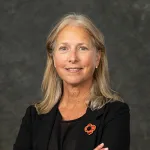 Community engagement is a core component of Cathryn Wilson’s professional career. Her background includes 20+ years of leadership, advising boards and consulting experience in BC’s arts and not-for-profit sectors. Since 2015, Cathryn has served as Executive Director of the BC Achievement Foundation delivering unique award programs: Community, First Nations Art, Applied Art + Design, Indigenous Business, and Reconciliation which is offered in partnership with the Office of the Lieutenant Governor of BC. Previously, she held stewardship and development roles at both UBC and the BC Cancer Foundation and served as General Manager of Elektra Women’s Choir. A graduate of Western University, Cathryn began her public service at the Ontario Legislature and the federal House of Commons.
Community engagement is a core component of Cathryn Wilson’s professional career. Her background includes 20+ years of leadership, advising boards and consulting experience in BC’s arts and not-for-profit sectors. Since 2015, Cathryn has served as Executive Director of the BC Achievement Foundation delivering unique award programs: Community, First Nations Art, Applied Art + Design, Indigenous Business, and Reconciliation which is offered in partnership with the Office of the Lieutenant Governor of BC. Previously, she held stewardship and development roles at both UBC and the BC Cancer Foundation and served as General Manager of Elektra Women’s Choir. A graduate of Western University, Cathryn began her public service at the Ontario Legislature and the federal House of Commons.

